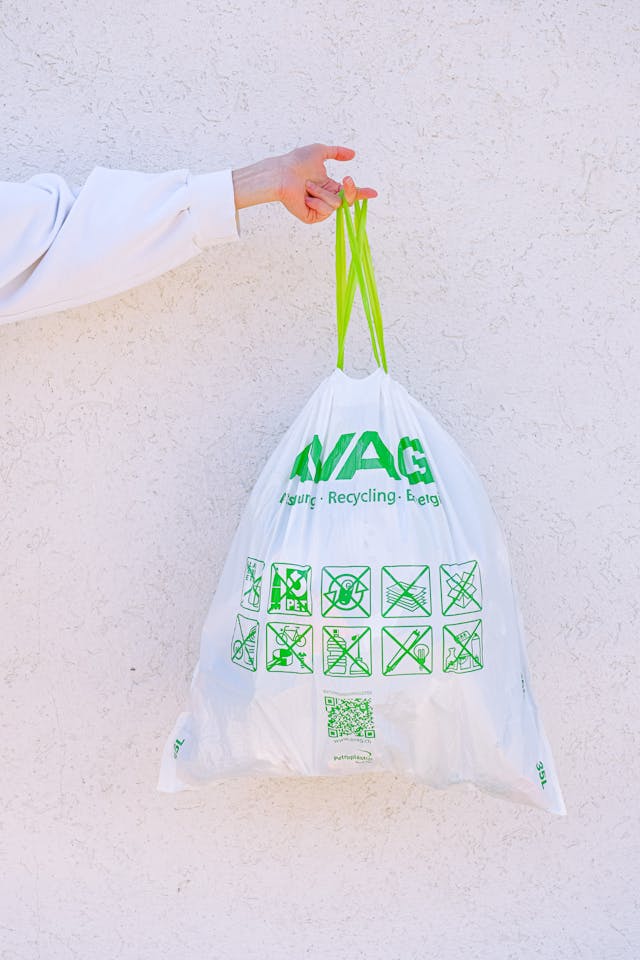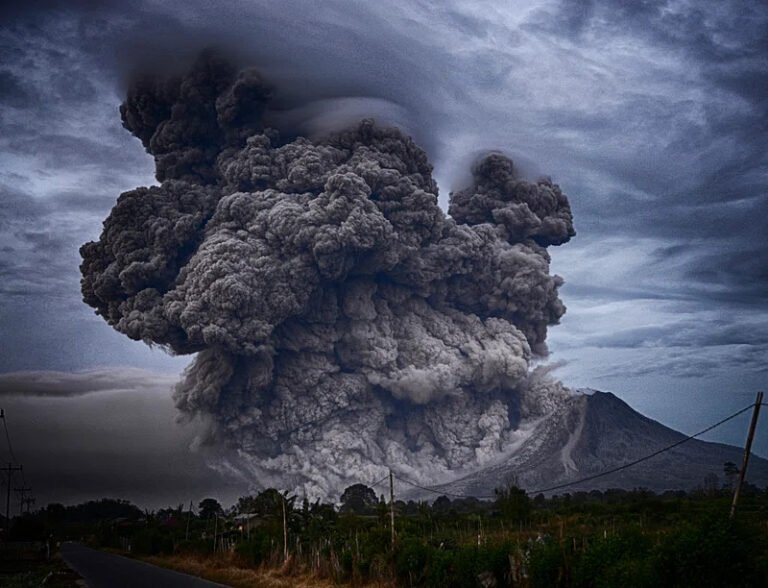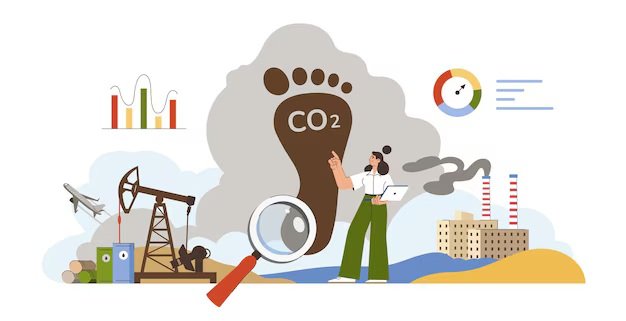Are Biodegradable Plastic Bags Good for the Environment?
If you’ve ever grabbed a bag labelled “biodegradable” at the grocery store, you probably felt a small sense of accomplishment, like you were making a choice that aligned with your values—a step toward helping the planet. I know that’s how I felt the first time I used one. Holding that bag, I thought, Finally, a simple solution to this enormous plastic problem.
That small sense of accomplishment, however, turned into confusion months later when I found that same biodegradable bag sitting almost perfectly intact in my backyard compost bin. The experience set me off on a journey of discovery: Are biodegradable plastic bags really as good for the environment as they claim to be?
This guide dives deep into the truth about biodegradable plastic bags. Together, we’ll examine the science, explore the challenges, and uncover the hidden realities behind eco-friendly branding. Along the way, I’ll share personal experiences, stories from others who’ve grappled with similar questions, and expert insights to help us make informed, responsible choices.

In This Article
- My First Encounter with Biodegradable Bags
- What Does “Biodegradable” Actually Mean?
- How Are Biodegradable Plastics Made?
- My Composting Experiment: Putting Biodegradable Bags to the Test
- Why Biodegradable Doesn’t Always Mean Environmentally Friendly
- Biodegradable vs. Conventional Plastics: Which Is Better?
- The Problem with Greenwashing
- Expert Insights on Biodegradable Plastics
- Alternatives to Biodegradable Plastics
- Success Stories: Communities Leading the Way
- Looking Ahead: Building a Better System
- Personal Reflections
- Conclusion
My First Encounter with Biodegradable Bags
I remember it vividly. It was 2020, and my family had decided to make big changes toward a greener lifestyle. We switched to reusable water bottles, started composting our kitchen scraps, and, of course, bought a pack of biodegradable plastic bags for groceries and trash.
One afternoon, after a small gardening project, I used one of those bags to collect weeds and plant trimmings. Feeling proud of myself, I tossed the bag into our backyard compost bin, expecting it to vanish like magic over the coming weeks.
Months later, when I emptied the compost bin, there it was—the same bag, still holding its shape. It had faded slightly, and the edges were brittle, but it was far from the pile of rich, crumbly soil I had envisioned. This puzzled me. Weren’t these bags supposed to break down naturally?
Curiosity led me down a rabbit hole of research, conversations with experts, and even my own experiments. What I found was both enlightening and frustrating: biodegradable doesn’t always mean what we think it does.
What Does “Biodegradable” Actually Mean?
The term biodegradable often conjures images of materials disappearing effortlessly into the soil. In reality, biodegradation refers to a process where microorganisms break down materials into water, carbon dioxide, and biomass. For this to happen, specific conditions—like temperature, humidity, and oxygen levels—must align perfectly.
Here’s the catch: many biodegradable plastics only break down in industrial composting facilities, not in your backyard or a landfill. Without these ideal conditions, they behave more like traditional plastics, lingering in the environment for years or even decades.
This realisation was humbling. I’d been placing blind trust in labels without understanding the science behind them.
How Are Biodegradable Plastics Made?
To understand the limitations of biodegradable plastics, it helps to know how they’re made. These materials fall into a few main categories:
| Type | Source Material | Breakdown Conditions | Risks |
|---|---|---|---|
| Polylactic Acid (PLA) | Corn, sugarcane | Industrial composting facilities | Can release microplastics if mishandled |
| Polyhydroxyalkanoates (PHA) | Fermented plant sugars | Can degrade in soil or water | High production costs limit availability |
| Oxo-biodegradable Plastics | Petroleum-based plastics | Sunlight and oxygen exposure | Often fragments into microplastics |
| Compostable Plastics | Plant-based materials | Industrial composting facilities | Requires strict conditions to fully break down |
Each type offers a promise of reduced environmental harm, but they also come with caveats. PLA, for instance, is derived from renewable resources like corn, yet it requires energy-intensive manufacturing and special conditions to decompose.
Learn More: Why Is Plastic Pollution Bad for the Environment? Understanding Its Impact and Solutions
My Composting Experiment: Putting Biodegradable Bags to the Test
Determined to see for myself how these materials behave, I decided to run an experiment. I placed three different types of biodegradable plastic bags—PLA, oxo-biodegradable, and compostable—in my backyard compost bin alongside food scraps, leaves, and grass clippings. Over the course of a year, I checked on their progress regularly.
- PLA Bag: After six months, the bag was intact, showing no signs of breaking down. By the end of the year, it had started to crack but was far from decomposed.
- Oxo-Biodegradable Bag: This bag fragments into smaller pieces within three months, but instead of disappearing, the fragments remain in the soil.
- Compostable Bag: Of the three, this bag showed the most promise, breaking down into smaller pieces after six months. However, even after a year, remnants of the material were still visible.
The results were sobering. These so-called eco-friendly bags weren’t as biodegradable as I had hoped.
Why Biodegradable Doesn’t Always Mean Environmentally Friendly
1. Industrial Composting Facilities Are Essential
Many biodegradable plastics are designed to break down only in industrial composting environments. These facilities maintain specific temperatures (50–70°C), humidity levels, and oxygen flow to accelerate decomposition. Yet, according to the EPA, only 9% of the world’s plastic waste ends up in such facilities.
2. Landfills: The Real Problem
Most biodegradable plastics don’t make it to composting facilities; they end up in landfills. In these oxygen-deprived environments, they don’t break down properly. Instead, they can release methane, a greenhouse gas 25 times more potent than CO₂.
3. Risk of Microplastics
One of the most concerning findings in my research was that certain biodegradable plastics, like oxo-biodegradables, fragment into microplastics when exposed to sunlight and air. These tiny particles are now found everywhere—from deep-sea trenches to human bloodstreams—and pose serious risks to wildlife and human health.
Biodegradable vs. Conventional Plastics: Which Is Better?
| Category | Biodegradable Plastics | Conventional Plastics |
|---|---|---|
| Raw Materials | Renewable (corn, sugarcane) | Non-renewable (petroleum) |
| Production Energy Use | Moderate | High |
| Greenhouse Gas Emissions | Lower than conventional plastics | High |
| Decomposition Time | 3–6 months (industrial compost) | 450+ years |
| Environmental Risks | Microplastics, methane emissions | Long-term persistence |
While biodegradable plastics reduce dependence on fossil fuels, their disposal challenges and environmental risks often undermine their benefits.
The Problem with Greenwashing
Biodegradable plastics are often marketed as guilt-free solutions, but this is a classic example of greenwashing, where companies exaggerate the environmental benefits of their products.
According to a 2022 survey by the Environmental Working Group, 63% of consumers believe biodegradable plastics break down in nature without causing harm. This misconception fuels demand for these products, even when they may do more harm than good.
Expert Insights on Biodegradable Plastics
To deepen my understanding, I reached out to Dr. Emily Foster, an environmental scientist specialising in plastic pollution.
“The problem isn’t just the materials themselves,” Dr. Foster explained. “It’s the entire system of how we use and dispose of them. Biodegradable plastics can only be part of the solution if we build the infrastructure to handle them properly.”
Her words resonated with me. If biodegradable plastics aren’t disposed of in the right way, they may end up contributing to the very problem they’re meant to solve.
Alternatives to Biodegradable Plastics
While biodegradable plastics have their place, they’re not the silver bullet we often hope for. Here are some more sustainable options:
1. Reusable Bags
Switching to reusable bags made from materials like cotton or jute is one of the most impactful changes you can make. I’ve used the same set of cloth bags for years, and they’ve more than paid for themselves.
2. Compostable Packaging
Unlike biodegradable plastics, certified compostable products are designed to break down completely without leaving harmful residues. Just be sure they’re disposed of in a composting facility.
3. Innovative Materials
New materials like seaweed-based plastics and mycelium (fungus-based) packaging are gaining traction. These materials are truly biodegradable in natural environments and have far less environmental impact.
Success Stories: Communities Leading the Way
San Francisco, USA
San Francisco’s zero-waste initiative includes curbside composting for biodegradable and compostable plastics. This program has diverted over 85% of the city’s waste from landfills.
France
France banned disposable plastic bags in 2016, mandating compostable alternatives instead. This move has significantly reduced plastic pollution while promoting the growth of industrial composting facilities.
Looking Ahead: Building a Better System
To make biodegradable plastics a viable part of the solution, we need systemic changes:
- Improved Infrastructure: Invest in more industrial composting facilities.
- Stronger Regulations: Enforce clearer labelling standards to reduce greenwashing.
- Public Education: Help consumers understand the difference between biodegradable and compostable.
Personal Reflections
After years of exploring this issue, I’ve learned that the choices we make as consumers matter, but they’re only part of the equation. Governments, industries, and communities must work together to create systems that support sustainable living.
For my part, I’ve reduced my use of all plastics, embraced reusable products, and advocated for better waste management programs in my community. It’s a small step, but it’s one I’m proud of.
Conclusion
The answer isn’t a simple yes or no. Biodegradable plastics have the potential to reduce our reliance on fossil fuels, but without proper disposal systems, they can cause as much harm as conventional plastics.
As consumers, we have a responsibility to make informed choices. By understanding the limitations of biodegradable plastics and exploring alternatives, we can take meaningful steps toward a more sustainable future.







